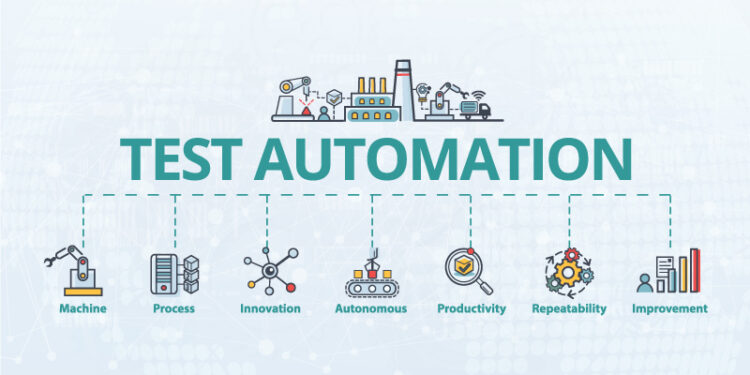The growing need for digitalization to make business operations efficient has pushed companies to employ innovative solutions such as test automation. Sure, manual testing still works, and many companies still leverage it ,and will continue to do so, as some activities are better done by a human. But there are some modern challenges that manual testing cannot adequately address.
This is where the role of test automation comes to play. According to Functionize, using test automation you can achieve more accurate results more efficiently. It saves you considerable time and money, which you could allot for other essential components of your business.
You can utilize job scheduling software to provide you with an efficient tool to let you schedule jobs and measure their performance in your massive company. Such software can be a shining example that test automation can indeed help improve your software before it gets released to the public. You can check out jamsscheduler.com to learn more.
But of course, don’t just adopt test automation without understanding what it is and how it works. While there are attached benefits, there are also downsides you should avoid or minimize. Take note of the following common mistakes to avoid during a software test automation. After all, testers are humans who, like anyone of us, are capable of committing errors.
Page Contents
1. Understanding the why

source:medium.com
Given the fantastic features of the process, many proponents get excited to automate on a list of things and dabble on the best testing framework. That’s okay as long as you have clear answers to the following questions. Why are you shifting to test automation in the first place? How do you plan to execute it, considering the given situation and resource? What are the issues you try to address with the test? Which particular solutions does the test automation provide?
Of course, you have done the legwork and did a feasibility study of who your potential market could be. And, in this digital age, you know that consumers, primarily of digital and software products, only expect a seamless performance on all devices. And as such, your software must be able to perform this to perfection.
Consumers who buy software generally expect their workflow and processes to be made more flawless and agile so they can focus on the other aspects of the business. And as a developer, you need to put yourself in your consumer’s shoes or wear their hat to feel what they need and require in their enterprise.
In addition, it’s essential to have clarity on these foundational questions before choosing the tools. Ensure that you have clear and targeted expectations and goals for your project. The bottom line is that your automation efforts and strategies should gear the improvement of quality and quicker results.
2. Don’t automate things that are not good for scriptless automation

source:functionize.com
Many things are not ideal for scriptless automation, so make sure to avoid automating them. One miscalculation relevant to this is translating testing activities into one-to-one automation. That can only lead to wasted efforts and time, which are not necessary for automating scriptless processes.
You should also refrain from allotting months developing a framework and script for automation purposes if you’re only running a test once a year. It’s still best to gear on something that delivers a good ROI and a real value.
There are management goals promoting quantity which the software development team can respond to. One good example of this is automating 90% of testing in the company. There is a probability, however, that to reach the said percentage, the team members might automate the wrong things. That only piles up costs in the long run and diverts the testing proponents’ attention, thus, deviating from the right track.
That is why every company must focus and dabble on the quality. What should you do to identify the tests worthy of automation? Focus your attention on repeatable and deterministic software testing. Or consider a performance testing that you can work on using the test automation tool.
3. Selecting a Low-Quality and Inefficient Tool
Thinking they can save on cost for the entire enterprise, most managers should use a single tool for the company. But take note. A single tool cannot address all errors or problems, and you would have to make use of specialized tools to bridge the gap.
Such limitation applies even if the framework of some tools is a script less test automation tool for desktop, cloud services, mobile, API, and web. That is why you have to be clear about the problems you wish to solve before buying a tool. You can start with tools that have a free trial among the many options available today.
You can then run it following the purchase and ensure that it aligns with agile testing and should embody a holistic development lifecycle. You can also purchase a tool that is packed with premium features as well as manual and automatic.
What’s good to note is that in any business, you have to make considerable investments to get premium results. And practicing this, you will eventually achieve ROI in less time because your product will exceed your expectations and deliver results faster. A well-researched and tested product will have word-of-mouth advertising doing its marketing on its own, and there would be less need for a paid promotion to get the word out. The reviews can show its capabilities.
Among the best options is Practitest, which comes with tailored and innovative features. It allows the software development team members and the testers to execute tests across various platforms and parameters. Among these are cloud services, API, mobile, web, and desktop. You don’t need coding skills or writing to do that efficiently. With it, you can develop practical and sophisticated tests for automation.
4. Not choosing a test automation tool that meets the needs of testers

source:lynda.com
The selection of testing tools may come as tricky, especially for newbie testers, given the wide range of available tools. But once you are clear with the parameters of what to select, you can easily find the right tool.
But of course, it’s essential to know all the options and the specialized features you’re after. One of the most important considerations, to begin with, is knowing the skill sets of your testing members. Know the qualities aligned with the three types of testers, namely, business tester, technical tester, and developer tester.
In other words, make sure the features match the given skills. Technical testers, for example, can leverage on higher-level tools without the necessity of coding skills. Developer testers, on the other hand, can focus on their chosen coding medium for writing tests while business testers can write tests using natural language.
It’s then time to run a trial run using the tools you listed once you’ve identified testers’ technical expertise. It’s then time to dabble on solutions that both coders and non-coders can work on. There are likewise tools that provide script less and script-based editing. The process is much easier and more convenient for the testing members if there are no advanced developer skills required.
Although you would have to shelve a considerable amount, you might also want to up-skill the team. It saves you a significant time, and the results are worthwhile.
5. Using an Open-Source Tool
When it comes to open-source tools, there is a wide range of options available. Although there is no required lock-in for vendors, these tools are of high-quality, and there are options that apply well for both mobile and web test automation.
However, there is a significant downside to using an open-source tool since it entails intensive technical skills. There is also a limited to zero support team to cater to your queries, especially when using the tool for the first time. Limited support is a significant problem, given that there are a lot of unique needs and concerns relevant to every chosen tool.
Some open-source tools have limited functionalities, and many don’t have the fundamental features for accurate and efficient testing. However, an open-source tool is your best shot if you need software automation for simple reporting. But if you wish to access the full-blown features, opt for a commercial tool as it can also benefit your testing efforts in the long run.
6. Not Coordinating with other members of the team
All projects of all sizes, including software testing or development, require a robust communication strategy to ensure a harmonized approach. In other words, testers should have the ability to communicate with other team members, aside from embodying expertise and experience. Since they have varying viewpoints, they should express what they are doing to product owners, developers, test managers, and other audiences.
It’s a big downside to the operation if this is not done. Do note that testers can avoid running into problems related to vague direction and guidance through an effective communication scheme. Your efforts can satisfy the test requirements, including the performance needs if you have established clear communication channels with the software development team members. If you’re the manager, maintain eye contact with other individuals, speak to the team clearly, and listen attentively to issues or queries raised.
In a nutshell, effective communication increases quality, reduces possible risks, and accelerates the testing procedure.
7. Addressing Bugs Yourself

source:ranorex.com
Due to the communication gap, documentation errors, software complexity, timeline, deviation from standards, and programming errors, bugs exist in software. As a tester, you can address the issue by yourself, but it’s best to tap on the developer as they know more about the bug than you since they created the software. Take note. The software developer you choose should have intensive experience in identifying the core factors leading to the problem. Please give developers a wrong assumption and misleading them, so do provide them with accurate and precise information.
8. Scripting with the use of Record Tools or Playback

source:hackernoon.com
To generate scripts, you likely have used record tools and playbacks. How would you describe the experience? Can you easily understand and maintain them?
It is given that most testers create scripts using playback and record, especially the organization or business that has only begun exploring the world of automation. That is why every member of the team must be aware of the automation process and methodology.
Here is the thing. The test scripts that playback and record tools generate are not that reliable. So to create skeletal scripts, the software development team should consider the given features.
Those are among the common mistakes you should avoid or minimize as a testing member or manager. Take note. Every mistake leads to a loss in time and effort. So make sure to start with the right tool such as Practitest to effectively automate the testing process and generate more accurate and credible results.
9. Not generating visibility of your test automation results

source:medium.com
Many companies create test automation scripts that perform well, but fall short on making sure that these results can be interpreted in a meaningful way that will assist the company in releasing better quality products.
Integrating your test automation results with a test management tool can be a great way to ensure you are able to generate visibility into the results of your automation tool.
Make sure to select a tool that has a built-in support for automation to make your life easier.





